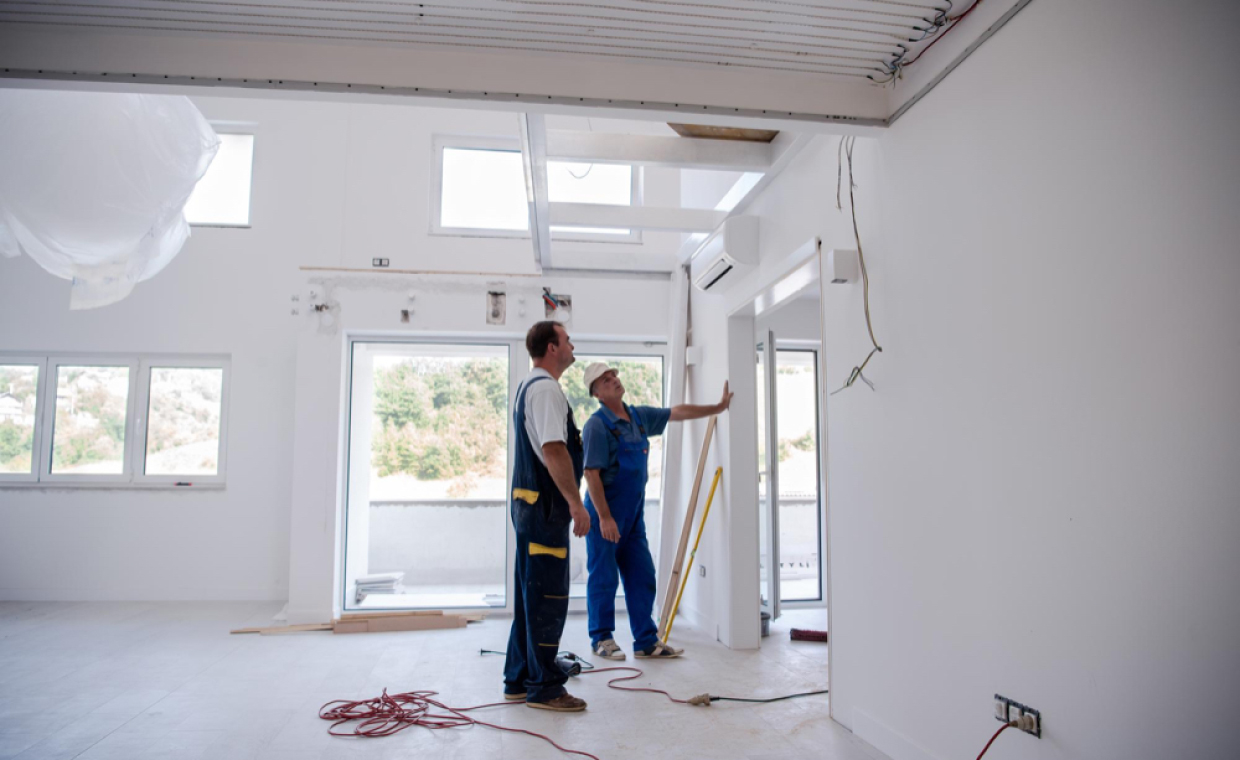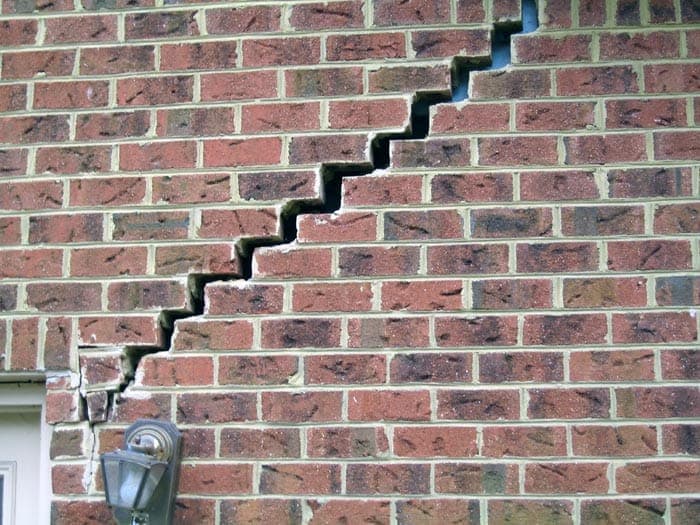
Though in modern world, concrete is a very famous material for the construction of the home, load bearing structures are still popular for small houses. They are built from clay bricks or cement blocks. Diagonal cracks in brick walls appear in the home because of deflection of the wall supports, foundation settlement, soil movement, and vegetation near the home.
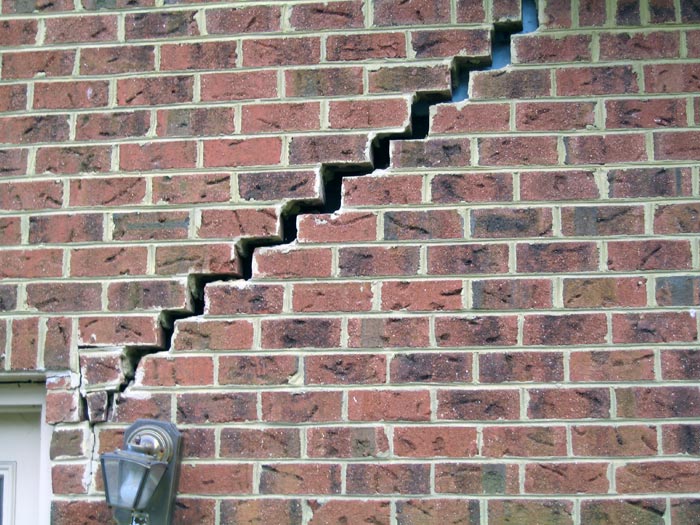
Courtesy - basementsystems.ca
When the homeowner finds any types of cracks in the home, they just get nervous. The homeowner gets confused both about causes and remedial measures. This is obvious as they spent a lot of money towards building a home.
We have already discussed the following topic.
Horizontal Cracks in Walls of Load Bearing Structures
Horizontal Cracks in Walls of RCC Framed Structures
Here we discuss the causes of diagonal cracks in walls of load bearing structure and measure to rectify them.
Diagonal Cracks in Walls of Load Bearing Structure
01. Diagonal Cracks in External Corner of the Building:
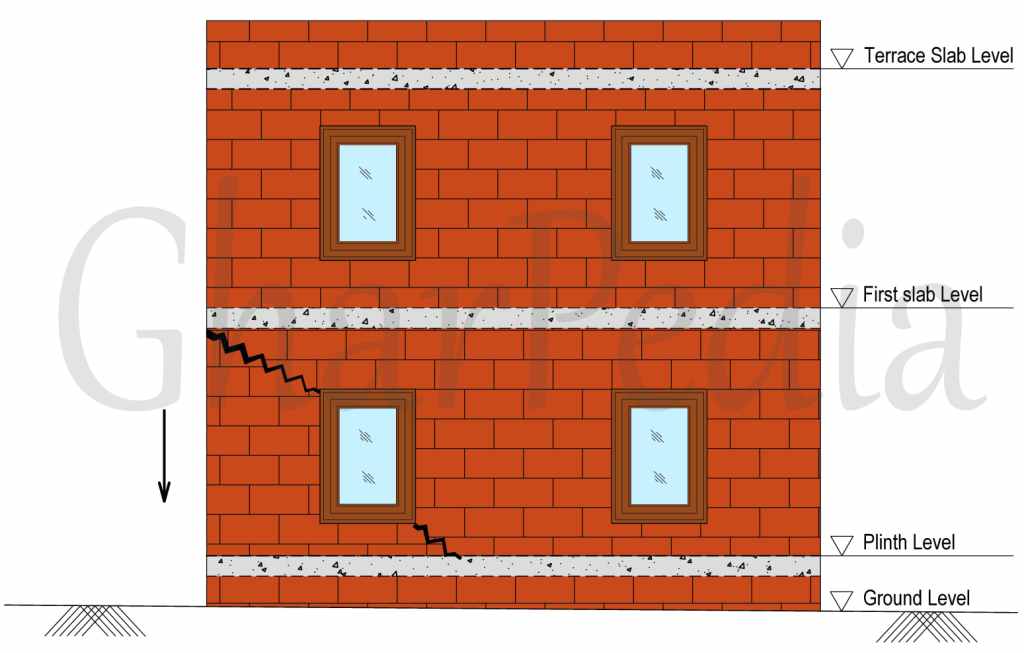
These types of diagonal cracks in external walls are wider at the top. They become narrow as they travel downward. The cracks pass through DPC and extend up to the foundation of the house. These cracks appear when it is built on shrinkable clay soil like black cotton soil. They also appear when the house has a shallow foundation.
When the clay soil dries out, it will shrink and make room for movement of the foundation. Such soil exerts huge pressure while swelling and shrinking, thus making supporting soil unstable. This Movement causes the failure of foundation and hence diagonal cracks in brickwork start to appears at the corner of the house. Furthermore, sometimes fast growing trees close to the house accelerate the problem of diagonal cracking. It is due to the process of dehydration of soil by the roots of trees.
Use the Following Measure to Prevent the Diagonal Cracks in External Corner of the Building:
- Do not rest your foundation on shrinkable clay soil. If required, increase the depth of foundation. Rest your foundation on a level where the crack ceases. Such cracks can be seen when you excavate the pit.
- Provide necessary foundation depth for foundation system.
- Plant the trees at least 2 meters away from the periphery of the house.
- Cover the periphery of the house with the 2 m wide flexible waterproof apron. i.e appropriate plinth protection.
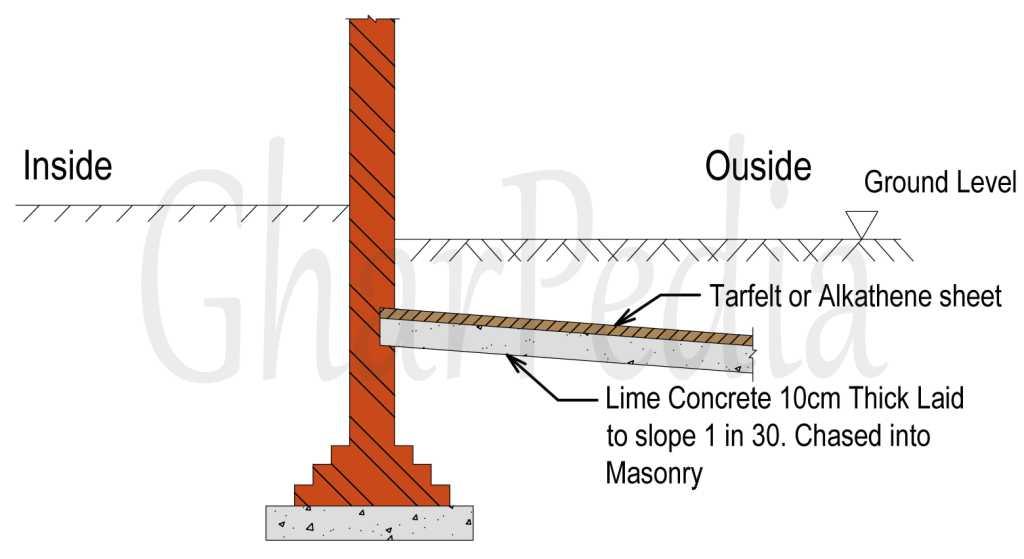
Provide flexible waterproof apron or plinth protection at a the depth of about 500 mm below the ground level and chased 30 to 40 mm into the wall. The apron is provided on 100 mm thick PCC laid to slope 1 in 30, and it is also chased into masonry.
02. Diagonal Cracks in Cross Wall of a Multi- Storied Load Bearing Structure:
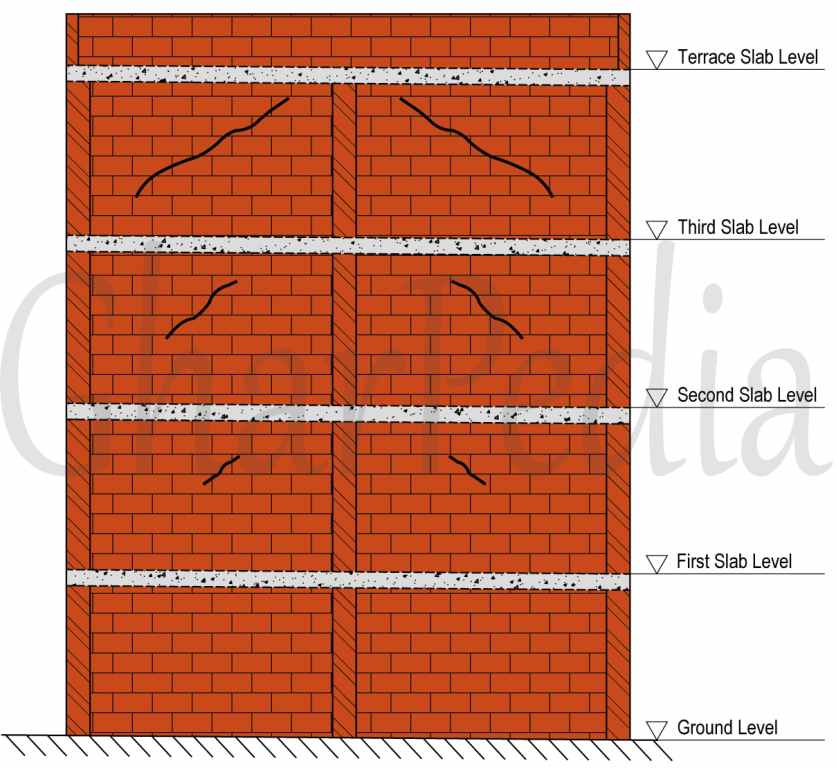
Diagonal cracks in cross walls appear due to the differential strain in the internal and external load bearing walls to which the cross walls are bonded.
When there is a higher load on the center wall then the external wall, the cross wall which is attached to the external and the center wall will have high shear stress. Due to this differential stress, diagonal cracks appear in the cross wall of multi-story load bearing building.
You can prevent these diagonal cracks by proper design of the building. Ensure that shear stresses develop in the wall of the building and are equally distributed on the walls.
03. Diagonal Cracks Due to Tilting of External Wall Or Random Cracking in Internal Wall or Floor Cracks Up and Becoming Uneven:
This cracking is due to moisture movement of shrinkable soil (black cotton soil) when the foundation is shallow.
In dry weather, the soil under the foundation shrinks and external walls settle down. The wall tends to tilt outward because shrinkage is more at the periphery of the building and less in the inner regions. Hence due to tilting of external wall, random diagonal cracks appears on the internal walls.
Furthermore, the soil swells up, and the movement is reversed during the rains. But cracks once formed do not fully close. The floor heaves up and becomes uneven. Hence cracks appear on the floor due to movement of soil.
Use Following Preventive Measures to Minimise this Type of Diagonal Cracks in Brickwork:
- Do not rest your foundation on black cotton soil. Rest your foundation on the good yellow soil or firm soil. The foundation should be as deep as possible.
- Provide 2 m wide flexible waterproof apron on the periphery of the home.
04. Diagonal Cracks in Walls at Sill/Lintel Level:
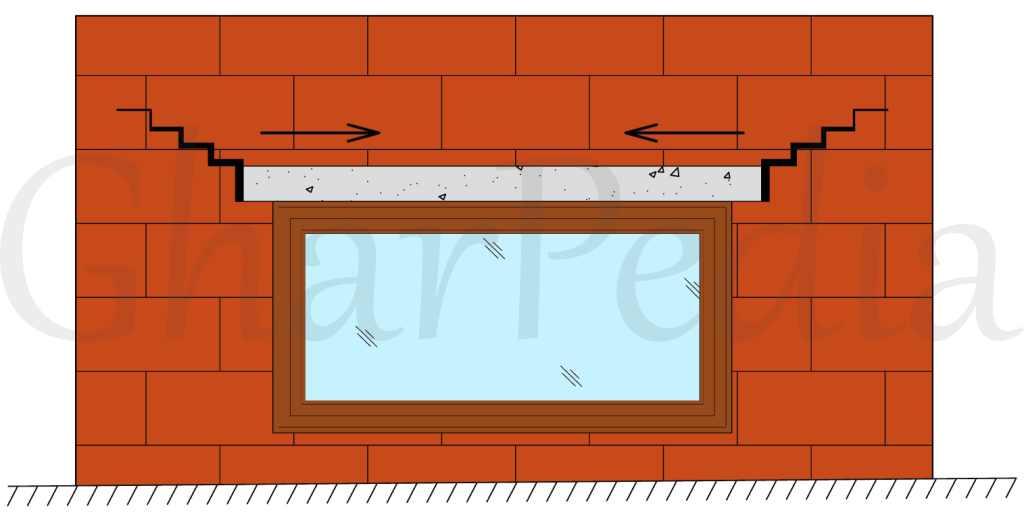
This type of diagonal cracks appears over lintels of long span openings due to drying shrinkage of in-situ RCC lintel. These cracks in brickwork start from the ends of lintels travelling upwards in masonry away from the opening. It is observed in the first dry spell after completion of the building.
The diagonal cracks will also appear at lintel and sill level if no RCC lintels and sills are provided with adequate size and having enough bearing support on both sides. This will happen due to concentration of shear due to sudden change in cross section of the walls. Hence lintel and sills are must with optimum section at size.
Use Following Precaution to Minimise the Diagonal Cracks in Brickwork Over Lintel:
- Use Pre-cast lintels with optimum section size.
- Use low shrinkage and low slump concrete for lintels.
05. Diagonal Cracks in Half Brick Thick Wall:
Refer our post on cracks in half brick thick walls and measures. In which, we have given a full guide of horizontal, vertical and diagonal cracks in partition walls of load bearing and infill partition walls of framed structure.
In conclusion, whatever is the reason for the cracks in brick walls but the best solution is to prevent it at the time of construction. Hence, the cost of repairing will not be a problem in future at a time of routine maintenance work.
Also Read:
Investigation & Repairing Of Cracks In Brickwork
Why Modern Buildings are Prone to Cracks Compared to Old Buildings?
8 Major Causes that Influences the Cracks in Building



























